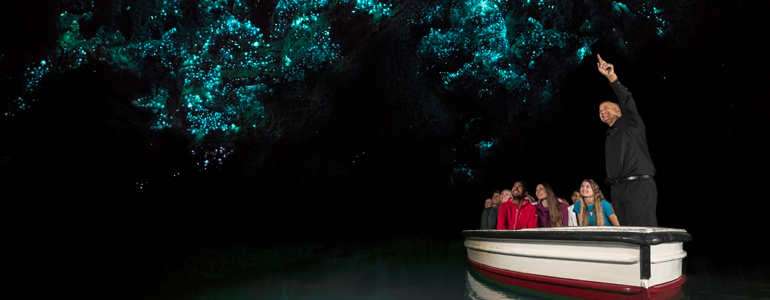Components of a Destination Management plan
On this page

Corin Walker Bain, Waitomo Caves, Waikato
There are 16 main components in a Destination Management plan. These components have been developed using international research, government frameworks and industry consultation. Use the descriptions and questions in each component to focus thinking, stimulate discussion and identify gaps, opportunities and areas for further investigation.
In this section
Define the destination
Defining the destination is important when multiple stakeholders with various perspectives are involved. In addition, it fosters a pragmatic approach that can ensure progress and success.
Define the vision
A clearly defined long-term vision, to which the community and stakeholders are committed, with an agreed understanding of what success looks like, is critical to ensure all parties are heading in the same direction.
Data, research and analysis
Destination Management requires data, research and insights to inform decision making and measure success. This includes understanding your visitors well, how your destination delivers on visitor needs and expectations, as well as measuring how your community feels about visitors and the tourism sector.
Strategic fit
Destination Management planning needs to be cognisant of national and regional planning frameworks to reduce the potential for conflicting objectives and unfulfilled goals. Destinations also have a role in influencing the focus of these frameworks.
Brand positioning
Successful destinations have a clear brand and positioning that captures the essence of the destination. Collections of people, places and experiences create the destination’s brand story and value proposition. The destination’s logo is a symbol that represents the destination and the experience offered.
Target markets
It is essential to identify your target markets through your data/insights and destination analysis, as it should inform all planning, development and marketing activity. Include both domestic and international visitors and segment the markets where possible, based on the visitors’ characteristics, motivations and behaviours.
Experience and product development (Attractions)
Research shows that successful destinations provide visitor experiences that meet the visitors’ needs and expectations and are true to the promises of their brand. They continuously maintain and enhance their existing products and where there are gaps or opportunities, they invest in new products, infrastructure, services and amenities that strengthen the destination’s appeal and competitiveness.
Access
Access to and around a region/destination is a key enabler. It can either accelerate or hinder visitor growth.
Attitudes
While visitors primarily come to New Zealand for the scenery and natural environment, their most memorable moments are often the interactions with our people and cultures. Our manaakitanga and our local residents’ acceptance of visitors and willingness to host them is important to the success of the destination.
Marketing and promotion (Awareness)
A destination’s marketing and promotional activity is a core part of managing a destination effectively, targeting the right type of visitors, encouraging regional dispersal and addressing seasonality. For a region to create a viable, sustainable tourism sector, its needs to stand out in a highly competitive marketplace.
Amenities, services and infrastructure
Visitors require a range of services and amenities within a location to fulfil their needs and expectations. They share these amenities and services with the local residents. Visitors become ‘temporary residents’, often supporting a scale of community amenity that benefits the locals, helping to sustain the vibrancy, diversity and social, cultural and economic fabric of communities.
Environmental stewardship
New Zealand’s visitor experience depends on our beautiful landscapes and natural environment; therefore, it is essential that we protect and restore our environment for current and future generations to enjoy.
Capability and development
Investment in people and capability building is critical to lifting the productivity of the tourism sector and delivering quality visitor experiences.
Leadership and structures
Leaders and champions are required across all aspects of destinations, and partnerships and collaboration are important for success. A focus and commitment to building DM knowledge and capability across all entities involved in supporting the destination is important.
Risk and crisis management
Risk management is vital, given New Zealand’s propensity to natural disasters such as earthquakes, volcanic eruptions and severe weather events. Both the tourism industry and destinations must plan for such events, undertake risk assessments and pre-plan and practise response strategies.
Measuring success
Successful destinations regularly revise and re-engineer their plans and structures according to the changing visitor needs and economic influences.

